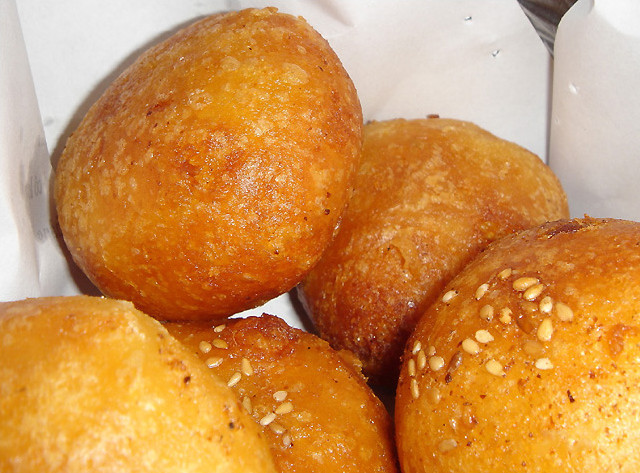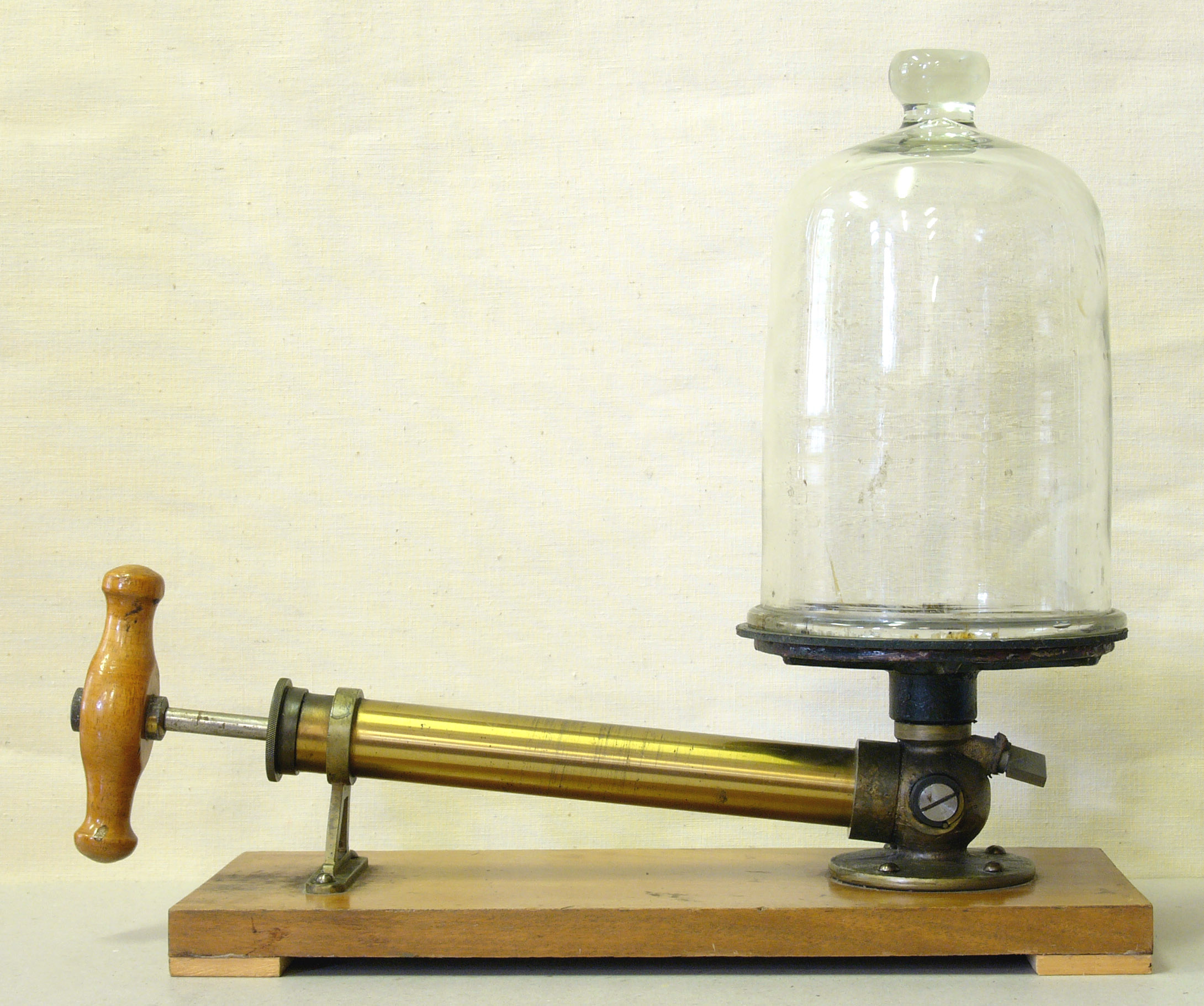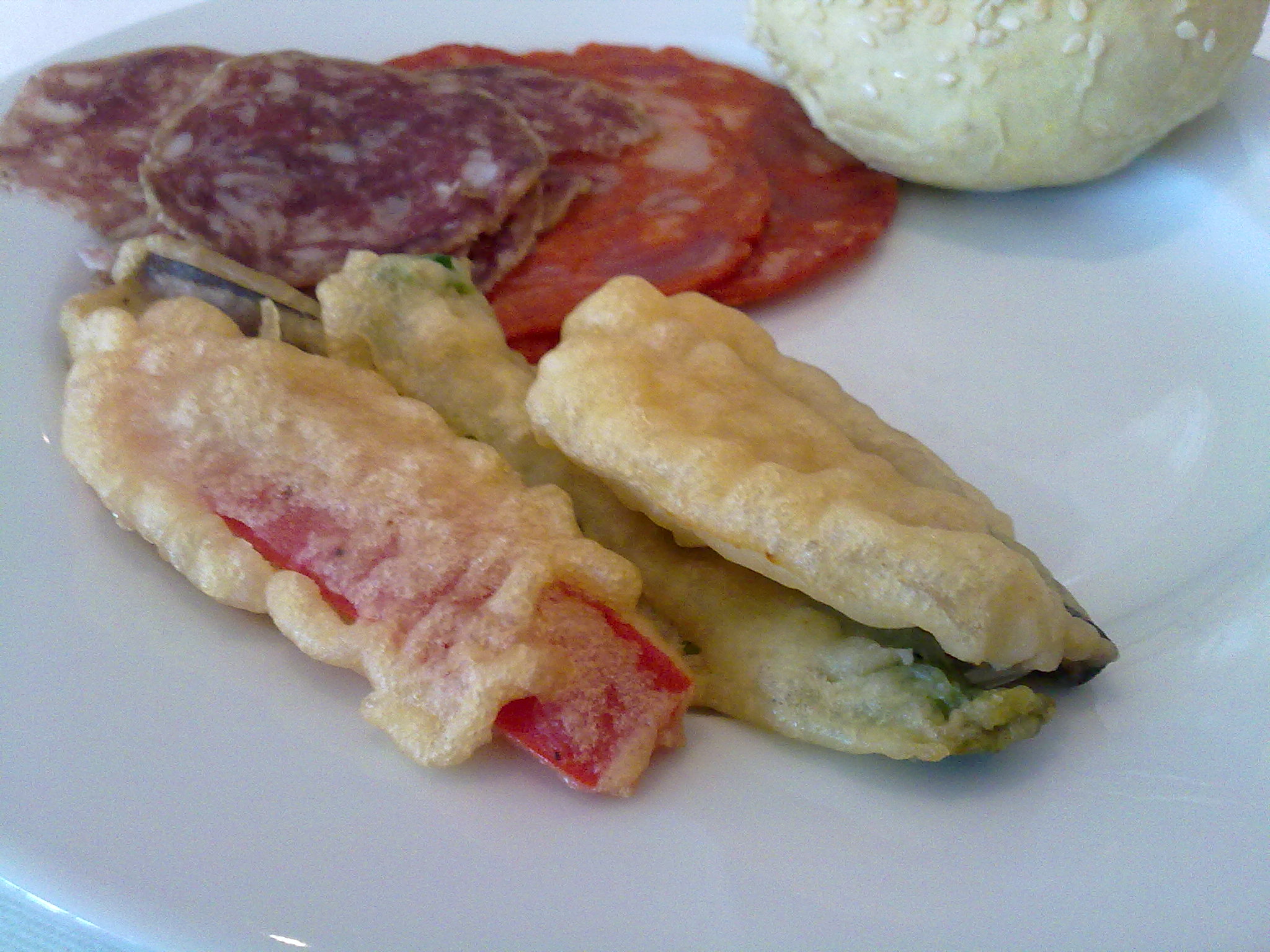|
Vacuum Fryer
A vacuum fryer is a deep-frying device housed inside a vacuum chamber. With vacuum frying it is easier to maintain natural colors and flavours of the finished product. Due to the lower temperatures applied (approximately ), the formation of suspected carcinogen acrylamide is significantly lower than in standard atmospheric fryers, where the frying temperature is approximately . The fat absorption of the products is also reported to be lower than in atmospheric fryers. In Southeast Asia (mainly the Philippines, Thailand, China and Indonesia) batch type vacuum fryers are mainly used for the production of fruit chips. However, these machines are only appropriate for relatively small production companies. Working principle Water boils at lower temperatures at lower pressure. As pressure decreases below that of the general atmosphere, the boiling point of water also drops below 100 °C (212 °F). Vacuum fryers allow food items to be fried at lower temperatures by lowering ... [...More Info...] [...Related Items...] OR: [Wikipedia] [Google] [Baidu] |
Deep-frying
Deep frying (also referred to as deep fat frying) is a cooking method in which food is submerged in hot fat, traditionally lard but today most commonly oil, as opposed to the shallow frying used in conventional frying done in a frying pan. Normally, a deep fryer or chip pan is used for this; industrially, a pressure fryer or vacuum fryer may be used. Deep frying may also be performed using oil that is heated in a pot. Deep frying is classified as a hot-fat cooking method. Typically, deep frying foods cook quickly since oil has a high rate of heat conduction and all sides of the food are cooked simultaneously. The term "deep frying" and many modern deep-fried foods were not invented until the 19th century, but the practice has been around for millennia. Early records and cookbooks suggest that the practice began in certain European countries before other countries adopted the practice. Deep frying is popular worldwide, with deep-fried foods accounting for a large portion of gl ... [...More Info...] [...Related Items...] OR: [Wikipedia] [Google] [Baidu] |
Airlock
An airlock is a room or compartment which permits passage between environments of differing atmospheric pressure or composition, while minimizing the changing of pressure or composition between the differing environments. An airlock consists of a chamber with two Hermetic seal, airtight doors or openings, usually arranged in series, which do not open simultaneously. Airlocks can be small-scale mechanisms, such as Fermentation lock, those used in fermenting, or larger mechanisms, which often take the form of an antechamber. An airlock may also be used underwater to allow passage between the air environment in a pressure vessel, such as a submarine, and the water environment outside. In such cases the airlock can contain either Atmosphere of Earth, air or water. This is called a floodable airlock or underwater airlock, and is used to prevent water from entering a submersible vessel or underwater habitat. Operation The procedure of entering an airlock from the external or am ... [...More Info...] [...Related Items...] OR: [Wikipedia] [Google] [Baidu] |
Food Industry
The food industry is a complex, global network of diverse businesses that supplies most of the food consumed by the world's population. The food industry today has become highly diversified, with manufacturing ranging from small, traditional, family-run activities that are highly labour-intensive, to large, capital-intensive and highly mechanized industrial processes. Many food industries depend almost entirely on local agriculture, animal farms, produce, and/or fishing. It is challenging to find an inclusive way to cover all aspects of food production and sale. The UK Food Standards Agency describes it as "the whole food industry – from farming and food production, packaging and distribution, to retail and catering". The Economic Research Service of the USDA uses the term ''food system'' to describe the same thing, stating: "The U.S. food system is a complex network of farmers and the industries that link to them. Those links include makers of farm equipment and chemica ... [...More Info...] [...Related Items...] OR: [Wikipedia] [Google] [Baidu] |
Institute Of Food Technologists
The Institute of Food Technologists (IFT) is an international, non-profit scientific society of professionals engaged in food science, food technology, and related areas in academia, government and industry. It has more than 17,000 members from more than 95 countries. History Early history As food technology grew from the individual family farm to the factory level, including the slaughterhouse for meat and poultry processing, the cannery for canned foods, and bakeries for bread, the need to have personnel trained for the food industry did also. Literature such as Upton Sinclair's ''The Jungle'' in 1906 about slaughterhouse operations would be a factor in the establishment of the U.S. Food and Drug Administration (FDA) later that year. The United States Department of Agriculture was also interested in food technology, and research was already being done at agricultural colleges in the United States, including the Massachusetts Institute of Technology (MIT), the University ... [...More Info...] [...Related Items...] OR: [Wikipedia] [Google] [Baidu] |
List Of Deep Fried Foods
This is a list of deep fried foods and dishes. Deep frying is a cooking method in which food is submerged in hot fat, such as cooking oil. This is normally performed with a deep fryer or chip pan, and industrially, a pressure fryer or vacuum fryer may be used. Deep frying is classified as a dry cooking method because no water is used. Due to the high temperature involved and the high heat conduction of oil, the food is then prepared quickly. Deep fried foods * * * * * * * * * * * * * * * * * * * * * * * ** * * * * * * ** Czech '' Smažený sýr'' ** Slovakian '' Vyprážaný syr'' * * * * * * * * * * * * ('' Coxinha'') * * * : * * * * * * * * * * * * * * * * * * * * * * * * * * * * * * * * * * * * * * * * * * * * * * * * * * * * * * * * – the Puerto Rican version * * * ** * * * * * * * * * * * * * * * * – some varieties are deep fried * * * * ... [...More Info...] [...Related Items...] OR: [Wikipedia] [Google] [Baidu] |
List Of Cooking Appliances
This is a list of cooking appliances that are used for cooking foods. Cooking appliances Boilers * Coffee percolator * Coffeemaker * Electric water boiler * Instant hot water dispenser * Kettle See also * Appliance recycling * Cooker * Food processing * Induction cooking * List of cooking techniques * List of food preparation utensils * List of home appliances * List of ovens This is a list of oven types. An oven is a thermally insulated chamber used for the heating, baking or drying of a substance, and most times used for cooking or for industrial processes (industrial oven). Kilns and Furnace (other)#Applia ... * List of stoves References {{DEFAULTSORT:Cooking appliances Cooking appliances Technology-related lists Food- and drink-related lists ... [...More Info...] [...Related Items...] OR: [Wikipedia] [Google] [Baidu] |
Programmable Logic Controller
A programmable logic controller (PLC) or programmable controller is an industrial computer that has been ruggedized and adapted for the control of manufacturing processes, such as assembly lines, machines, robotic devices, or any activity that requires high reliability, ease of programming, and process fault diagnosis. PLCs can range from small modular devices with tens of Input/output, inputs and outputs (I/O), in a housing integral with the processor, to large rack-mounted modular devices with thousands of I/O, and which are often networked to other PLC and SCADA systems. They can be designed for many arrangements of digital and analog I/O, extended temperature ranges, immunity to electrical noise, and resistance to vibration and impact. PLCs were first developed in the automobile manufacturing industry to provide flexible, rugged and easily programmable controllers to replace hard-wired relay logic systems. Dick Morley, who invented the first PLC, the Modicon 084, for Gene ... [...More Info...] [...Related Items...] OR: [Wikipedia] [Google] [Baidu] |
Vacuum Pump
A vacuum pump is a type of pump device that draws gas particles from a sealed volume in order to leave behind a partial vacuum. The first vacuum pump was invented in 1650 by Otto von Guericke, and was preceded by the suction pump, which dates to antiquity. History Early pumps The predecessor to the vacuum pump was the suction pump. Dual-action suction pumps were found in the city of Pompeii. Arabic engineer Al-Jazari later described dual-action suction pumps as part of water-raising machines in the 13th century. He also said that a suction pump was used in siphons to discharge Greek fire. The suction pump later appeared in medieval Europe from the 15th century. Donald Routledge Hill (1996), ''A History of Engineering in Classical and Medieval Times'', Routledge, pp. 143 & 150-2 Donald Routledge Hill, "Mechanical Engineering in the Medieval Near East", ''Scientific American'', May 1991, pp. 64-69 (cf. Donald Routledge HillMechanical Engineering By the 17th century, water ... [...More Info...] [...Related Items...] OR: [Wikipedia] [Google] [Baidu] |
Stainless Steel
Stainless steel, also known as inox, corrosion-resistant steel (CRES), or rustless steel, is an iron-based alloy that contains chromium, making it resistant to rust and corrosion. Stainless steel's resistance to corrosion comes from its chromium content of 11% or more, which forms a Passivation (chemistry), passive film that protects the material and can self-healing material, self-heal when exposed to oxygen. It can be further alloyed with elements like molybdenum, carbon, nickel and nitrogen to enhance specific properties for various applications. The alloy's properties, such as luster and resistance to corrosion, are useful in many applications. Stainless steel can be rolled into Sheet metal, sheets, plates, bars, wire, and tubing. These can be used in cookware, cutlery, surgical instruments, major appliances, vehicles, construction material in large buildings, industrial equipment (e.g., in paper mills, chemical plants, water treatment), and storage tanks and tankers for ch ... [...More Info...] [...Related Items...] OR: [Wikipedia] [Google] [Baidu] |
Vacuum
A vacuum (: vacuums or vacua) is space devoid of matter. The word is derived from the Latin adjective (neuter ) meaning "vacant" or "void". An approximation to such vacuum is a region with a gaseous pressure much less than atmospheric pressure. Physicists often discuss ideal test results that would occur in a ''perfect'' vacuum, which they sometimes simply call "vacuum" or free space, and use the term partial vacuum to refer to an actual imperfect vacuum as one might have in a laboratory or in space. In engineering and applied physics on the other hand, vacuum refers to any space in which the pressure is considerably lower than atmospheric pressure. The Latin term ''in vacuo'' is used to describe an object that is surrounded by a vacuum. The ''quality'' of a partial vacuum refers to how closely it approaches a perfect vacuum. Other things equal, lower gas pressure means higher-quality vacuum. For example, a typical vacuum cleaner produces enough suction to reduce air pressur ... [...More Info...] [...Related Items...] OR: [Wikipedia] [Google] [Baidu] |
Frying Pan
A frying pan, frypan, or skillet is a flat-bottomed pan used for frying, searing, and browning foods. It typically ranges from in diameter with relatively low sides that flare outwards, a long handle, and no lid. Larger pans may have a small grab handle opposite the main handle. A pan of similar dimensions, but with less flared, more vertical sides and often with a lid, is called a sauté pan. While a sauté pan can be used as a frying pan, it is designed for lower-heat cooking. History Copper frying pans were used in ancient Mesopotamia. Frying pans were also known in ancient Greece, where they were called () and teganon (τήγανον) and Rome, where they were called ''patella'' or ''sartago''. The word ''pan'' derives from the Old English . Before the introduction of the kitchen stove in the mid-19th century, a commonly used cast-iron cooking pan called a 'spider' had a handle and three legs used to stand up in the coals and ashes of the fire. Cooking pots and pan ... [...More Info...] [...Related Items...] OR: [Wikipedia] [Google] [Baidu] |
Deep Frying
Deep frying (also referred to as deep fat frying) is a cooking method in which food is submerged in hot fat, traditionally lard but today most commonly Cooking oil, oil, as opposed to the shallow frying used in conventional frying done in a frying pan. Normally, a deep fryer or chip pan is used for this; industrially, a pressure fryer or vacuum fryer may be used. Deep frying may also be performed using oil that is heated in a pot. Deep frying is classified as a hot-fat cooking method. Typically, deep frying foods cook quickly since oil has a high rate of heat conduction and all sides of the food are cooked simultaneously. The term "deep frying" and many modern deep-fried foods were not invented until the 19th century, but the practice has been around for millennia. Early records and cookbooks suggest that the practice began in certain European countries before other countries adopted the practice. Deep frying is popular worldwide, with deep-fried foods accounting for a large por ... [...More Info...] [...Related Items...] OR: [Wikipedia] [Google] [Baidu] |








